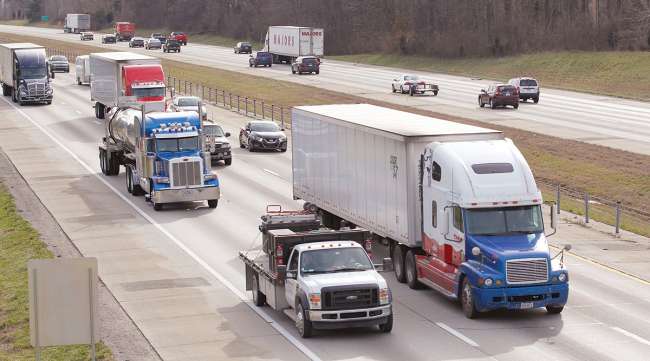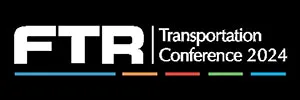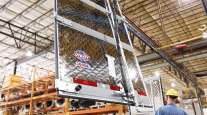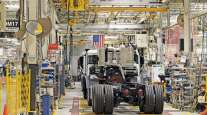Staff Reporter
FTR: Truckload Spot Rates to Rise 6.5-7% in 2025

[Stay on top of transportation news: Get TTNews in your inbox.]
FTR Transportation Intelligence expects truckload spot rates to rise 6.5-7% in 2025, Vice President of Trucking Avery Vise said in a presentation.
The acceleration will come after truckload spot rates increase about 1% overall in 2024, Vise told attendees of the 2024 FTR Transportation Conference in Indianapolis Sept. 10.
In the second quarter, spot rates hit a four-year low, Bank of America Research Analyst Ken Hoexter said at the end of Q2.
However, diesel prices are currently at the lowest seen since October 2021. Carriers’ margins have remained weak, but relatively stable despite falling linehaul rates, as the decrease in fuel costs has offset the lower freight rates.

The current national average diesel price is $3.555 per gallon, according to U.S. Energy Information Administration data released Sept. 9. It is 98.5 cents lower than 12 months earlier after shedding 31 cents per gallon the past nine weeks.
Contract rates, meanwhile, have clearly found the bottom of the market, but it is not showing up in the data, Vise told conference attendees.
Truckload contract rates are expected to fall 3.5% in 2024 but then rise 3% in 2025, he said.

Vise
Meantime, less-than-truckload rates are expected to increase 1.6% in 2024, and FTR is forecasting a 2% increase in 2025, Vise said.
A timeline for a rebound in freight rates and market conditions has been vexing executives and analysts for months.

“Where we are is difficult to tell. How the next six months plays out is also difficult to tell,” Estes Express Lines President Webb Estes told Transport Topics on July 23. Richmond, Va.-based Estes Express Lines ranks No. 11 on the TT Top 100 list of the largest for-hire carriers in North America and is No. 4 among less-than-truckload carriers.
Loadings have been steady in recent months, however, with FTR data indicating truckload loadings are set to rise 0.2% overall in 2024.
Shippers have become more efficient. “We’re getting back to the efficiencies we had pre-COVID,” Nestle Purina Senior Director of Supply Chain Travis Krous told conference attendees.
But loadings are expected to rise in 2025, Vise said in his presentation. Dry van loadings are expected to increase 1.5% in 2025, while refrigerated loadings are expected to increase 2.6% in 2025. “We would expect refrigerated to see consistent growth,” he said.

Starks
Underpinning the rates and loadings growth is an overall healthy U.S. economy, according to FTR Chairman Eric Starks. “The outlook isn’t too bad. There is growth in the economy,” he said.
The U.S. Federal Reserve has managed to carry out a soft landing for the economy, reining in inflationary pressures through elevated interest rates. The Fed is expected to cut interest rates at its monthly Open Market Committee meeting Sept. 17-18. Starks said he expects a 0.5% cut in the benchmark interest rate.
FTR expects U.S. gross domestic product to rise 2.5% in 2024, 1.8% in 2025 and 2.3% in 2026. Transportation sector growth will play a role in that, Starks said, with FTR forecasting transport sector GDP growth of 2.6% in 2024, 2.3% in 2025 and 3% in 2026.
Want more news? Listen to today's daily briefing above or go here for more info
Even the industrial sector will pick up, according to FTR forecasts. Industrial sector GDP is set to be flat in 2024, nudge 0.5% higher in 2025 and 1.1% in 2026, it said. The long-term sector GDP growth rate averages 0.5%.
“I’m not overly pessimistic about the economy, but the economic recovery of the transportation sector has been elongated by some of the things people are concerned about,” Starks said.
Manufacturing and wholesale inventories are high while retail inventories are much lower, he added.




